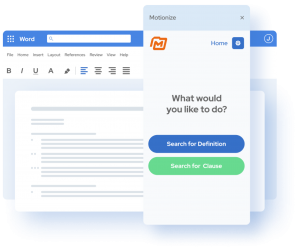Recent Posts
 September 14, 2021
September 14, 2021
 0
Comments
0
Comments

Contract drafters often get caught up in legalese that frankly make documents less clear and less approachable. Here are five factors to keep in mind when drafting easy to read, well made agreements. We put together a short helpful guide that should help you write better to read agreements that will make you clients happy! Follow these factors to get easy-to-read contracts.
Factor 1. Clear Writing that Avoids Excess Information
- Design and write documents in a way that best serves the reader. Your main goal is to convey your ideas with the greatest possible clarity.
- Resist the urge to sound formal. Relax and be natural. Try for the same unaffected tone you would use if you were speaking to the reader in person.
- Omit unnecessary detail. Boil down the information to what your reader needs to know.
- Use examples as needed to help explain the text.
- If you’re drafting documents that consumers will read test the language in front of them.
- Review our article on defined terms for further information.
Factor 2. Easy to Follow Design
- Make a table of contents for long documents.
- Use at least 10- to 12-point type for text, and a readable serif typeface. If you are publishing the document on your website, however keep the text in line with your brand styling guide.
- Try to use between 50 and 70 characters a line.
- Use ample white space in margins, between sections, and around headings and other special items.
- Use highlighting techniques such as boldface, italics, and bullet dots. But don’t overdo them, and be consistent throughout the document.
- Never use all-capital letters. It is really hard to read. People long thought that all-caps fulfilled the UCC 2-316’s Conspicuousness Requirement, there have actually been instance where the contract clause is so buried that courts have found this insufficient (See Atalese v. U.S. Legal Services Group, LP (NJ 2014). Regardless, all-caps is very difficult to read. (See the link here for the full explanation.) Use bold instead of all-caps.
- Use diagrams, tables, and charts as needed to help explain the text.
Factor 3. Logical Organization
- Use short sections, or subdivide longer ones.
- Put related material together.
- Order the parts in a logical sequence. Normally, put the more important before the less important, the general before the specific, and the ordinary before the extraordinary.
- Use informative headings for the main divisions and subdivisions. In consumer documents, try putting the main headings in the form of a question.
- Minimize cross-references.
- Use a topic sentence to summarize the main idea of each paragraph or of a series of paragraphs on the same topic.
- Make sure that each paragraph develops the main idea through a logical sequence of sentences.
Factor 4. Well Crafted Sentences
- Prefer short and medium-length sentences. As a guideline, keep the average length to about 20 words.
- In most sentences, put the subject near the beginning; keep it short and concrete; make it something the reader already knows about; and make it the agent of the action in the verb.
- Put the central action in strong verbs, not in abstract nouns. (“If the seller delivers the goods late, the buyer may cancel the contract.” Not: “Late delivery of the goods may result in cancellation of the contract.”)
- Keep the subject near the verb, and the verb near the object (or complement). Avoid intrusive phrases and clauses.
- Try to put the main subject and verb toward the beginning; don’t pile up conditions or qualifiers before the main clause.
- Put the strongest point, your most important information, at the end—where the emphasis falls.
- Prefer the active voice. Use the passive voice if the agent is unknown or unimportant. Or use it if, for continuity, you want to focus attention on the object of the action instead of the agent. (“No more legalese. It has been ridiculed long enough.”)
- Connect modifying words to what they modify. Be especially careful with a series: make clear whether the modifier applies to one or more than one item. (Examples of ambiguity: “educational institutions or corporations”; “a felony or misdemeanor involving dishonesty.”)
- Use parallel structure for parallel ideas. Consider using a list if the items are at all complicated, as when you have multiple conditions, consequences, or rules. And put the list at the end of the sentence.
Factor 5. Familiar Approachable Words
- Prefer familiar words—usually the shorter ones—that are simple and direct and human.
- Avoid legal jargon: stuffy old formalisms (Now comes; In witness whereof); here-, there-, and where- words (hereby, therein, wherefore); unnecessary Latin (arguendo, inter alia); and all the rest (and/or, provided that, pursuant to, the instant case). If you use “Witnessth”, I will have an aneurism!!!
- Avoid doublets and triplets (any and all; give, devise, and bequeath).
- In consumer documents, explain technical terms that you cannot avoid using.
- Omit unnecessary words.
- Replace wordy phrases (prior to, with regard to, in the event that).
- In consumer documents, consider making the consumer “you.”
- Avoid multiple negatives.
- Be consistent; use the same term for the same thing, without thinking twice.
Factor 6. Use Motionize

One of the easiest ways attorneys can draft better agreements is to use a drafting aid like Motionize. Our drafting aid checks for some of the most frequently found errors in contracts, such definitional misusage, undefined terms, and terms defined in multiple locations. With our AI-powered clause library and reviewing tool, you can drafting agreements with fewer errors under tight client deadlines.
Schedule a demo to try us today.
You can also subscribe to our best practice contract newsletter here.

 by
by